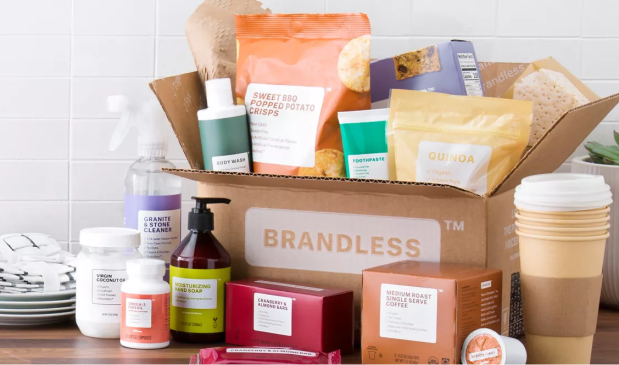Brandless Turns To Subscriptions To Make Service Stickier

With simple packaging that is nondescript by design and an ethos that values simplicity and quality above all, Brandless has made quite a name for itself in the short time it has been on the market since it was founded in 2012. CEO Tina Sharkey believes that while consumers certainly want high-quality goods, they are tired of paying what she calls the “brand tax” for access to them.
That tax, she noted, encompasses marketing, retailer margins and other expenses that can typically push up prices on brand-name beauty products by as much as 30 percent.
But consumers can’t wear, eat, clean with or really use all of those marketing expenses – and so Brandless decided to eliminate them in favor of a $3 (almost) across-the-board price point, a streamlined assortment of goods, simple design for its packaging materials and the power of word-of-mouth advertising to carry them forward.
And now Brandless is making it easier for customers to commit, with their recent launch of a subscription service. Consumers can set up regular deliveries of select goods on a timeline that works for them – weekly, monthly or three times a year, depending on their need. Each box also comes with a surprise gift – because buying essential goods should be fun, according to Sharkey.
“We’re trying to build a better way, starting with our culture and our team, then looking at the supply chain and how we can bring efficiency to it by going direct. And then building direct relationships with the community we serve,” she told Retail Dive. “The thing that’s so cool about having those relationships is that they literally tell us, either through their posts, their tags, their emails or their tweets, what they’re looking for, and we respond in kind.”
Brandless goods can be one-off, one-time purchases, according to Sharkey, but due to the nature of what they sell, they are more likely to be the type of goods consumers purchase on repeat, like cleaning goods or toilet paper. “Set it and forget it” ordering models are a successful way to capture those recurring purchases – and one Amazon has used to great effect with its Prime Pantry and subscription ordering programs.
But access to Prime programs requires a $119 annual membership, whereas Brandless doesn’t require memberships for subscriptions and charges a flat $5 delivery fee for any order under its $39 free shipping threshold. Alternatively, consumers can join Brandless as annual members for $36 a year ($3 a month), which drops that $5 shipping fee.
Sharkey did note that, so far, most customers who have opted for subscription boxes have also upgraded to an annual membership.
The move comes as Brandless is working overtime to build loyalty in their audience and spur more repeat customers. Third-party data indicates two areas that have been a problem for the firm.
By the numbers, Brandless doesn’t have a notable market share in any of its product categories. That alone is neither surprising nor all that disturbing, given the firm’s age and mostly digital sales channels.
But Brandless’ bigger challenge is that it doesn’t seem to have quite the retention levels it needs for its marketing-free business model. Out of the customers who bought from Brandless for the first time in the final quarter of 2017, 20 percent made another purchase in the following quarter, and just 13 percent bought something three quarters later. That’s according to new data from Edison Trends, which tracks consumer retail receipts.
Amazon (which competes with Brandless in many areas with its Basics line) does better, as do Instacart and Thrive Market, when it comes to consumers returning – but Brandless is still straining to build its customer loyalty.
But Brandless, currently valued at $500 million, snapped up $240 million in a round led by SoftBank in late 2018 – and remains committed to creating an increasingly sticky brand that stays true to its values of transparency, low pricing and high quality for commodity consumer goods. Those funds, according to Sharkey, will go to expanding its product line and improving its operations as it attempts to recruit and retain new customers to its singular vision of offering high-quality, low-hype offerings.
“Better doesn’t need to cost more,” Sharkey said.
